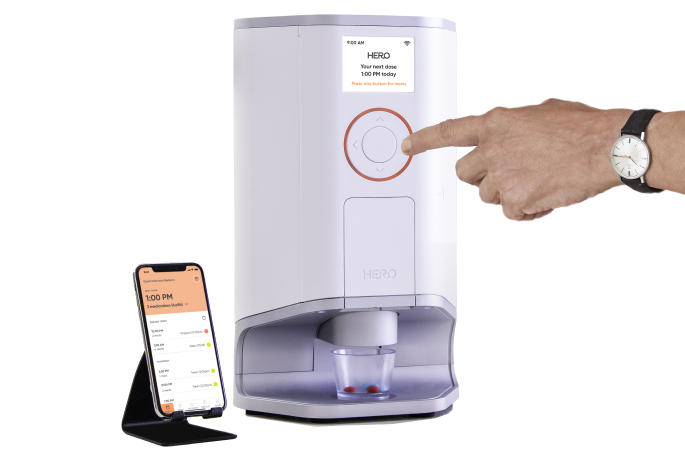Chronic Pain Management: Strategies and Future Directions

About the Author: Rohit Jayakar MD is a physician in the field of Physical Medicine & Rehabilitation, currently at Stanford Health Care. He specializes in treating musculoskeletal injuries, neurological injuries, and chronic pain.
Despite the medical advances over the last several decades, chronic pain continues to be a very difficult problem to treat.
Not only is it a complex condition with contributions from social, biological, psychological, and physical factors, but it often has debilitating consequences both for individuals and society. Recent estimates by the Center for Disease Control and the National Health Interview Survey suggest the prevalence of chronic pain in the United States is as high as 20.4%, or 50 million Americans, while 8% (20 million Americans) suffer from high-impact chronic pain, i.e. pain that interferes with work or daily activities.1 Furthermore, chronic pain has been linked to a myriad of poor health outcomes, including anxiety and depression, impaired mobility, opioid dependence, and generally reduced quality of life.2
It can also be challenging to quantify the healthcare costs and societal burden of chronic pain, as it takes many different forms and is associated with many distinct pathologies.
Consider low back pain, the second most common complaint during a primary care visit in the United States. 60% of people will have at least one episode of low back pain at some point in their lives; moreover, costs of low back pain not only include direct medical costs, but also the costs of time away from work, disability payments, and decreased productivity. Altogether, these costs can amount to $38-$50 billion each year.3
And this represents low back pain alone. When factoring in other forms of chronic pain, direct medical costs and associated lost wages have been estimated at $560-$635 billion dollars annually. To put this in perspective, these costs far surpass the annual costs of cancer ($243 billion), heart disease ($309 billion), and diabetes ($188 billion)!4
Unlike heart disease or diabetes, there is no standardized approach to treating pain. In order to better understand this costly problem, we must understand what constitutes chronic pain, the considerations involved with its treatment, and the novel treatment approaches that may help ensure better health outcomes.
What Is Chronic Pain?
Chronic pain is defined as any pain lasting longer than 3 months. While it was previously thought that chronic pain was always caused by an underlying medical problem, the World Health Organization recently made chronic pain its own diagnosis with its own subcategories.
Types of Chronic Pain
Despite the updated definition, differentiating between different types of chronic pain is often challenging in and of itself, as pain is a subjective complaint and objective tests to measure pain do not exist.
Chronic pain must first be characterized as primary or secondary. Primary chronic pain is widespread pain that cannot be explained by a physical condition. Secondary chronic pain is pain stemming from underlying pathology.
Secondary chronic pain can be further subdivided to nociceptive pain and neuropathic pain.
Nociceptive pain originates from receptors around the body recognizing damage and sending a pain signal to the brain. This is the type of pain we are all used to feeling - a headache, an ankle sprain, and a paper cut are all examples of nociceptive pain.
Neuropathic pain, on the other hand, stems from a nerve problem. After certain injuries, nerves can become hypersensitive and send abnormally strong pain signals to the brain. This pain can be very debilitating and is usually described as a fierce burning or tingling sensation.
Despite the challenges that accompany a chronic pain investigation, an accurate diagnosis is crucial in order to prescribe the appropriate medications and interventions, and ultimately maximize the chance of successful treatment.
How Do We Treat Chronic Pain?
Chronic pain relief requires a multi-faceted treatment plan that involves medications and interventions, as well as addressing contributing psychological, social, and environmental factors.
Pharmacologic Treatments
There is a wide spectrum of medications available for many types of pain, both chronic nociceptive and neuropathic pain.
To manage nociceptive pain, a healthcare provider will typically prescribe a combination of non-steroidal anti-inflammatory medications, acetaminophen, topical creams, and opioid medications. Prescription opioids have significant side effects (e.g. constipation, sedation, nausea, clouded cognition, sexual dysfunction, and respiratory depression) and strong addiction potential. Therefore, if a patient has significant pain requiring long-term opioid use, long-acting opioids (e.g. extended release tablets or methadone) should be prescribed over short-acting options, which lead to more frequent use and a higher risk of abuse.5
Neuropathic pain can be more difficult to treat, as medications used for nociceptive pain usually show limited success in these cases. There are medications that specifically target neuropathic pain, most commonly known as gabapentin and pre-gabalin, which were initially designed to prevent seizures. These medications can come with side effects like impaired cognition, drowsiness, and general fatigue, often limiting the dose that one can tolerate. Other options include several different classes of antidepressants, but many of these also come with their own side effects of dry mouth, nausea, vision changes, and gastrointestinal discomfort.
Medication Adherence For Chronic Pain
As the former Surgeon General Everett Koop once said, “Drugs don’t work in patients who don’t take them.”
When several medications are prescribed--particularly with pain meds, which must often be taken 2-3 times a day--medication adherence can pose a major challenge. In fact, non-adherence rates to pain medications range from 8% to 62% with a mean of 40% in the U.S., with underuse being far more common than overuse. There are so many different non-opioid pain medications and over-the-counter pain medicines doctors and clinicians suggest as pain relievers. Commonly doctors are prescribing short-term pain control like ibuprofen, naproxen, and other nonsteroidal anti-inflammatory drugs (NSAIDs) and analgesics to treat pain conditions, but they can't help you if you don't take them.6
There are many patient factors that contribute to this problem. In addition to medication’s unwanted side effects, patients often take too many medications to reliably remember their regimen. Furthermore, when patients are not in significant pain, they may not be motivated to take their prescription drugs, leading to a flare-up in pain several hours after a missed dose. Unfortunately, playing “catch up” with painkillers f is rarely effective. When patients are unable to keep track of their medications, physicians can struggle to make appropriate adjustments to their regimen.
Considering the established positive relationship between good medication adherence and better treatment outcomes, there is a crucial need for a straightforward medication management solution.7 Fortunately, new technologies are making medication adherence much more feasible.
Prior studies have demonstrated improved patient safety and treatment outcomes with use of automated medication dispensing by pharmacists, healthcare professionals and physicians at the point of care.8,9 Companies like Hero take this a step further by implementing automated dispensing in the home. This novel, yet simple approach can transform a patient’s ability to self-manage medications.
By allowing patients to easily share medication adherence data with their physicians, Hero’s connected app also lifts the burden of keeping track of exactly how much and when patients have used their medications. In turn, physicians can make more methodical and informed decisions when altering patients’ medication regimens.
Ultimately, automated medication dispensing systems like Hero can be part of the treatment of chronic pain by solving this complex problem of medication non-adherence in the home setting.
Interventional Treatments
In addition to medications, there are often several procedures available for chronic pain.
Depending on the underlying pathology, certain injections and nerve blocks can often temporarily improve pain.
As a last resort, surgery can also be performed to implant a spinal cord stimulator, which desensitizes pain through the modulation of nerve signals. Although by no means a cure, this surgery can lead to about 50% pain improvement for about 50% of patients.10 The procedure also has many associated costs, with the initial spinal cord stimulator implantation estimated to cost $33,000 to $57,000 in the U.S., and annual maintenance and associated complications typically costing an additional $7,000-$10,000.11
Other Considerations
In the chronic pain patient, it is exceptionally important to have a close patient-physician relationship and regular physician follow-ups to continually reassess treatment strategies. This includes prioritizing a patient-centered approach in every visit to maximize patient compliance, ensuring a thorough discussion of self-management strategies, and addressing any psychological and socio-environmental factors can help reduce pain perceptions and increase patient well-being. This can include behavioral therapy, physical therapy, acupuncture, and other holistic therapies being used to manage pain in addition to medications. Psychological factors can include anxiety, depression, and high stress levels, while environmental factors include unbalanced diet, lack of exercise, poor sleep, and weak social support.
Since pain is such a complex process, individual biometric data can also be useful, such as daily sleep quality, exercise duration and intensity for endorphins, mood, and daily pain logs. Such data is becoming more attainable in recent years, thanks to the advent of smart wearable technology and applications that can easily track a multitude of patient variables and fluctuations throughout the day.
The Future Of Chronic Pain
Although additional medications and interventions for chronic pain have emerged over the last few decades, there are still significant advances that can be made.
With the emergence of new technologies, there is the potential to improve outcomes for patients with chronic pain and to decrease both the associated individual and societal costs. When it comes to medication non-adherence, automated medication dispensing systems like Hero could allow chronic pain patients to manage their meds consistently and accurately. Physician visits can be further optimized by obtaining valuable biometric data from smart wearables, which would allow providers to better determine the best course of treatment.
In conjunction with a patient-centered, multi-disciplinary approach to treatment, these technologies have the potential to transform chronic pain treatment once and for all.
References
1) Dahlhamer J, Lucas J, Zelaya C, Nahin R, Mackey S, DeBar L, Kerns R, Von Korff M, Porter L, Helmick C. Prevalence of Chronic Pain and High-Impact Chronic Pain Among Adults - United States, 2016. MMWR Morb Mortal Wkly Rep. 2018 Sep 14;67(36):1001-1006. doi: 10.15585/mmwr.mm6736a2. PMID: 30212442
2) Mills SEE, Nicolson KP, Smith BH. Chronic pain: a review of its epidemiology and associated factors in population-based studies. Br J Anaesth. 2019 Aug;123(2):e273-e283. doi: 10.1016/j.bja.2019.03.023. Epub 2019 May 10. PMID: 31079836
3) Hart LG, Deyo RA, Cherkin DC. Physician office visits for low back pain. Frequency, clinical evaluation, and treatment patterns from a U.S. national survey. Spine (Phila Pa 1976). 1995 Jan 1;20(1):11-9. doi: 10.1097/00007632-199501000-00003. PMID: 7709270.
4) Darrell J. Gaskin, Patrick Richard. The Economic Costs of Pain in the United States. The Journal of Pain, 2012; 13 (8): 715 DOI: 10.1016/j.jpain.2012.03.009
5) Argoff CE, Silvershein DI. A comparison of long- and short-acting opioids for the treatment of chronic noncancer pain: tailoring therapy to meet patient needs. Mayo Clin Proc. 2009;84(7):602-612. doi:10.1016/S0025-6196(11)60749-0
6) Timmerman L, Stronks DL, Groeneweg JG, Huygen FJ. Prevalence and determinants of medication non-adherence in chronic pain patients: a systematic review. Acta Anaesthesiol Scand. 2016 Apr;60(4):416-31. doi: 10.1111/aas.12697. Epub 2016 Feb 9. PMID: 26860919.
7) Hirsh AT, Atchison JW, Berger JJ, Waxenberg LB, Lafayette-Lucey A, Bulcourf BB, Robinson ME. Patient satisfaction with treatment for chronic pain: predictors and relationship to compliance. Clin J Pain. 2005 Jul-Aug;21(4):302-10. doi: 10.1097/01.ajp.0000113057.92184.90. PMID: 15951647.
8) Moroshek JG. Improving outpatient primary medication adherence with physician guided, automated dispensing. Clinicoecon Outcomes Res. 2017;9:59-63. Published 2017 Jan 5. doi:10.2147/CEOR.S114416
9) Do automated dispensing machines improve patient safety?. Can J Hosp Pharm. 2009;62(6):516-519. doi:10.4212/cjhp.v62i6.852
10) De La Cruz P, Fama C, Roth S, et al. Predictors of Spinal Cord Stimulation Success. Neuromodulation. 2015;18(7):599-602. doi:10.1111/ner.12325
11) Kumar K, Bishop S. Financial impact of spinal cord stimulation on the healthcare budget: a comparative analysis of costs in Canada and the United States. J Neurosurg Spine. 2009 Jun;10(6):564-73. doi: 10.3171/2009.2.SPINE0865. PMID: 19558289.
Complex med schedule? We solved it.
Hero’s smart dispenser reminds you to take your meds and dispenses the right dose, at the right time.

The contents of the above article are for informational and educational purposes only. The article is not intended to be a substitute for professional medical advice, diagnosis, or treatment. Always seek the advice of your physician or other qualified clinician with any questions you may have regarding a medical condition or its treatment and do not disregard professional medical advice or delay seeking it because of information published by us. Hero is indicated for medication dispensing for general use and not for patients with any specific disease or condition. Any reference to specific conditions are for informational purposes only and are not indications for use of the device.



